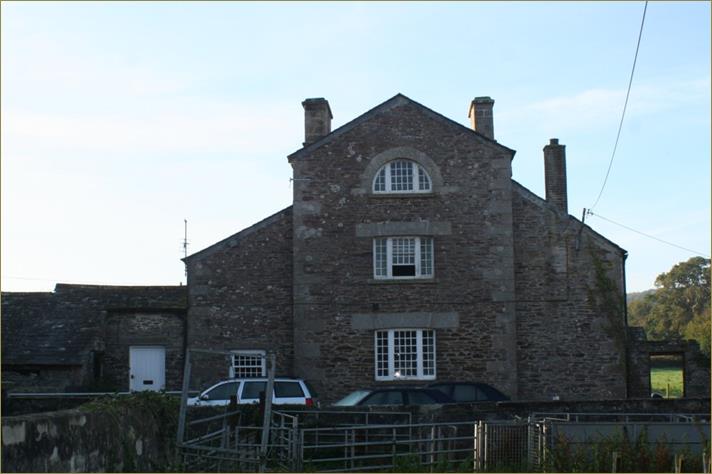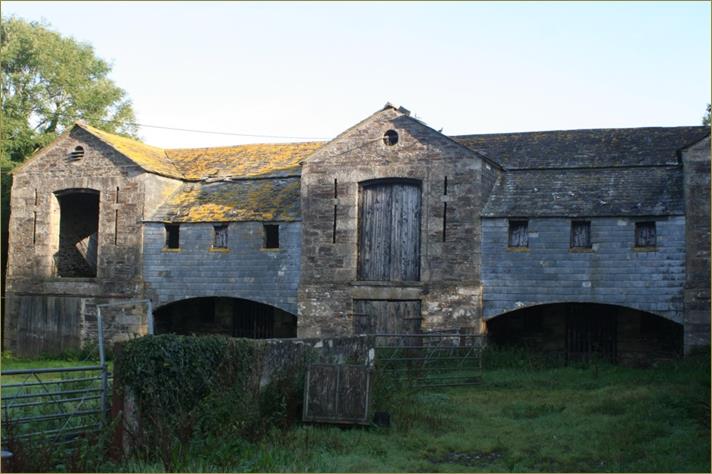|
This is the fourth of four Trebartha Estate farms mentioned in the Domesday Book of 1086 and was believed to be held from Robert Count of Mortain, recorded as Tribertham.
The reference in the Domesday Book is as follows:
 “Turstin holds of the Count, Trebartha. Wulfnoth held TRE (in the time of Edward the Confessor) wherein is half a hide and rendered geld for one ferling. Four teams can plough this. Turstin has in his demesne half a ferling and half a plough and the villeins remaining land and three ploughs. Turstin has two villeins and six bordars. Formerly as now it is worth 15 shillings yearly.”
“Turstin holds of the Count, Trebartha. Wulfnoth held TRE (in the time of Edward the Confessor) wherein is half a hide and rendered geld for one ferling. Four teams can plough this. Turstin has in his demesne half a ferling and half a plough and the villeins remaining land and three ploughs. Turstin has two villeins and six bordars. Formerly as now it is worth 15 shillings yearly.”
Brian Latham’s interpretation of this: “Turstin was a principal follower of Robert, Count of Mortain. The Count appointed Turstin as High Sheriff of Cornwall and sublet 26 of his manors to Turstin. In the context of Trebartha half a hide was approximately 348 acres. A plough team of eight oxen could plough 64 acres in a season and this equates to 256 acres being arable land and the rest being meadow or woodland. Turstin kept in hand just 24 acres which required only the part time service of a plough team.”
|
Some definitions:
- Geld: An Anglo-Saxon term for a form of payment or a tax imposed upon landholders.
- Demesne: A piece of land attached to a manor and retained by the owner for their own use.
- Ploughs: When the Doomsday book says ‘x ploughs’ it means ‘there are x farms on this manor in addition to the landlords farm’.
- Villeins: Wealthiest class of peasant. They usually cultivated 20-40 acres of land (sometimes as much as 100 acres), often as separate strips in different fields. He was also required to work on his lord's land or to provide a service to his lord.
- Bordar: Middle-ranking peasant, farming more land than a cottager but less than a villein. A typical small holder would have 10-20 acres of land, often as separate strips in different fields. He was also required to work on his lord's land or to provide a service to his lord.
- Hide: The hide was typically the area of land that could support a family and so it ranged from one area to another (depending upon local conditions).
- Virgate: One quarter of a hide, or two oxgangs. The amount of land that could be tilled during the ploughing season using two oxen. Varied in different regions and soil types. Approx. 30 acres.
- Ferling: Literally, quarter of a quarter; normally quarter of a Virgate, itself a quarter of a Hide. But seems to have varied between about two and eight ferlings to the virgate.
|
The really fine barns are shown below.
|




 “Turstin holds of the Count, Trebartha. Wulfnoth held TRE (in the time of Edward the Confessor) wherein is half a hide and rendered geld for one ferling. Four teams can plough this. Turstin has in his demesne half a ferling and half a plough and the villeins remaining land and three ploughs. Turstin has two villeins and six bordars. Formerly as now it is worth 15 shillings yearly.”
“Turstin holds of the Count, Trebartha. Wulfnoth held TRE (in the time of Edward the Confessor) wherein is half a hide and rendered geld for one ferling. Four teams can plough this. Turstin has in his demesne half a ferling and half a plough and the villeins remaining land and three ploughs. Turstin has two villeins and six bordars. Formerly as now it is worth 15 shillings yearly.”
